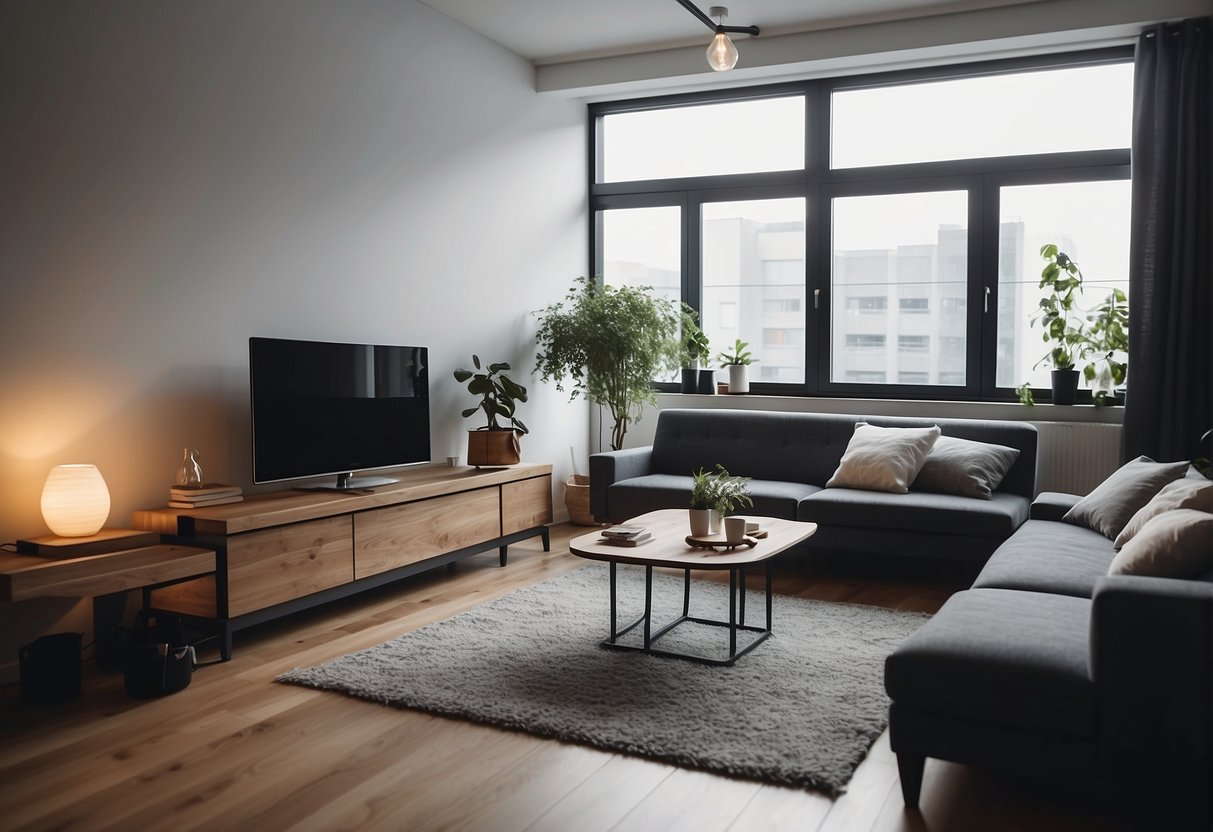10 Clever Design Hacks for Tiny Urban Homes
Living in a cozy apartment or a compact house doesn’t have to mean sacrificing style or comfort. With cities becoming more crowded and real estate prices soaring, making the most of limited space has become an art form of its own. Innovative interior design hacks can transform even the tiniest of rooms into a functional and aesthetically pleasing space. They key is to be creative and strategic in the way one utilizes every square inch, turning potential drawbacks into stylish features.

Spatial challenges often inspire some of the most creative solutions in home design. Using light and color to enhance the perception of space, multifunctional furniture that adapts to different needs, and smart storage that declutters and simplifies, are just a few ways to maximize small living areas. It’s about seeing potential in every nook and cranny, and using design to make a home feel larger than its physical boundaries.
Experts in interior design have a wealth of tips and tricks tailored for compact living. By incorporating elements like loft beds and foldable furniture, it’s possible to create more room for activities and storage, while maintaining a chic and uncluttered atmosphere. From innovative built-ins to clever color choices, it’s entirely feasible to live large within a small footprint.
Foundations of Small Space Design

When tackling the design of a small space, one of the foundational steps is the strategic use of color palette. Light colors are usually recommended because they have the ability to make spaces feel larger. Soft whites, pale blues, and gentle greys are examples that can brighten a space and offer a feeling of openness.
Incorporating natural light where possible also plays a crucial part. Sheer window treatments or open blinds let in more sunlight, naturally enlarging the space. When sunlight is scarce, one can use a variety of lighting fixtures to layer light and create depth.
To further create the illusion of space, mirrors can be utilized effectively. When placed opposite windows, mirrors can reflect light and views, adding dimension to the room.
When it comes to furniture, selecting pieces that are both functional and multifunctional is key. Furniture that can serve multiple purposes reduces the need for additional items, thereby saving precious space. Options include sofa beds, tables with hidden storage, or shelving units that double as room dividers.
A well-considered design for a smaller living area can turn it into a highly functional and aesthetically pleasing space. One must be mindful of how different elements like light, color, and furniture work together to create the perception of a larger area.
Storage and Decluttering

In smaller living spaces, every inch is precious. Effective storage and decluttering are not just about saving space; they are about creating an environment that feels open, organized, and stress-free. The following strategies provide targeted ways to tackle clutter and make the most of available space.
Smart Storage Hacks
Under-bed storage—a great way to utilize often-wasted space—is an ideal solution for out-of-season clothing or extra bedding. Storage ottomans can also offer an elegant touch to decor while doubling as a place to stash magazines or throws. For areas with limited floor space, consider wall-mounted cabinets, which keep items off the ground and make cleaning more manageable. They are particularly helpful in the kitchen and bathroom where counter space is at a premium.
Built-in storage, such as bookshelves or benches with hidden compartments, can transform dead space into useful areas for storing a wide range of items. When space is tight, one must think vertically. Installing shelves up high, typically unused spaces can serve as homes for books, planters, or additional storage bins.
Innovative Decluttering Methods
The first step in decluttering is often the hardest: deciding what to keep and what to part with. However, once that’s done, clever storage solutions come into play. Grouping similar items together in clear bins can make it easier to find what’s needed while keeping shelves tidy. Labels are a simple yet effective tool for maintaining organization; they are particularly useful in a pantry or closet.
Regularly reassessing what belongings are genuinely necessary can help limit accumulation. A practical tip is to follow the “one in, one out” rule—when a new item comes into the home, another should leave. This helps maintain a balance and ensures that space isn’t taken over by unused or unnecessary items.
Furniture Selection and Placement

Selecting the right furniture and placing it effectively are crucial steps in maximizing small living spaces. They require not just a keen eye for design, but also an understanding of how to best utilize every square inch available.
Choosing Multifunctional Pieces
For those working with limited square footage, choosing multifunctional furniture is key. A sofa bed serves as a comfortable place to sit during the day and transforms into a bed for overnight guests. Similarly, a loft bed can free up floor space below for a desk or storage area, making it a smart choice for studio apartments. Dining tables with drop leaves or extendable features offer versatility; they can accommodate additional guests when fully extended and save space when reduced.
Effective Layout Techniques
The art of furniture placement starts with creating a layout that prioritizes flow and function. A couch with a slim console table behind can define living areas in an open-concept space. Strategic positioning, like placing a desk near a window for natural light, enhances productivity without commandeering the room. Multipurpose furniture should double-up roles wherever possible, such as ottomans with storage or bookshelves that function as room dividers. Emphasizing vertical space with tall, slender furniture pieces helps maintain footprint while increasing storage.
Maximizing Vertical Space and Light

Maximizing vertical space and vertical light sources is a game-changer in small interiors, transforming cramped quarters into organizational havens and radiant, larger-feeling areas.
Utilizing Walls and Ceilings
When floor space is at a premium, one must look up—literally. Walls and ceilings provide untapped areas ripe for innovation. Floating shelves serve both functional and aesthetic purposes without intruding on precious square footage. For those who need to store more than what a few shelves can hold, tall, slim bookcases or modular storage systems climb walls and tuck away belongings stylishly. One inventive idea is to install a wall-mounted desk or a fold-down table, ensuring workspaces need not be permanent fixtures in a room.
Ceilings are not just for lighting fixtures; hanging planters or a bicycle from the ceiling can free up floor space while adding personality to a room. When incorporating these elements, it’s crucial to ensure that everything is securely anchored and organized to prevent clutter from moving from the floor to eye level.
Lighting Strategies for Small Areas
Lighting can dramatically affect the perception of space. A strategic approach to lighting involves using various types to create depth and warmth. Firstly, the placement of mirrors can reflect both natural and artificial light, making a space feel larger and brighter. Using wall sconces provides illumination at different heights and can highlight wall decor, drawing the eyes upward.
Ambient lighting from pendant lights can serve as focal points, while floor lamps can be tucked into corners to light up darker areas without requiring surface space. When it comes to windows, one should use light, sheer window treatments to maximize natural light during the day while providing privacy. The use of dimmable lights and smart bulbs allows for flexibility in adjusting the light’s intensity and color temperature, influencing the room’s ambiance according to different needs and times of the day.
Aesthetic Touches for Spaciousness
In the quest for spaciousness within small interiors, one must judiciously use aesthetics. It’s not just about less is more; it’s about the right choices fostering an airy, open feel.
Color and Texture Choices
The colors and textures one selects can dramatically affect perceptions of space. Light, neutral colors like beige, pale blues, or soft grays make walls seem to recede, creating a feeling of openness. Textures also play a crucial role; for instance, incorporating sheer curtains allows light to filter through, subtly adding depth and interest without overwhelming the space. Rugs with understated patterns can define areas while contributing to an overall sense of cohesion.
Decorative Elements
Carefully chosen decorative elements can enhance the aesthetics of a room while promoting spaciousness. Art can be a focal point; a thoughtfully curated gallery wall adds personality without consuming physical space. Plants bring life and a sense of wellness, and when placed strategically, they can draw the eye upward, giving the illusion of height. Vases and day beds serve a dual function as décor and practical pieces. Moreover, accent lighting can highlight architectural features and decor, adding depth to the room. It’s crucial to maintain a consistent style throughout to avoid visual chaos, keeping the space feeling unified and open.
Innovative Design Hacks
Creating a sense of spaciousness in small interiors hinges on smart design that maximizes utility while maintaining style. It’s all about transforming limitations into creative expressions of living well in confined spaces.
Transformable Spaces
Transformable spaces are key to maximizing limited square footage without compromising on functionality. Loft beds are a prime example, allowing one to utilize vertical space; the area underneath can then serve as a workspace or storage zone, embodying the essence of space-saving. Foldable furniture makes another profound impact: Items such as collapsible tables and chairs vanish when not in use, maintaining a cozy yet versatile living area.
Illusionary Tactics
To give a room the illusion of a larger space, certain visual tricks are employed. The use of white walls and reflective materials, such as mirrored furniture, helps to reflect light and create a brighter, airier environment. Incorporating open shelving and built-ins maintains order and reduces clutter, further enhancing the sense of spaciousness. Large windows invite natural light and, alongside the strategic use of room dividers like sliding doors, maintain an open feel while defining separate zones within the home.





